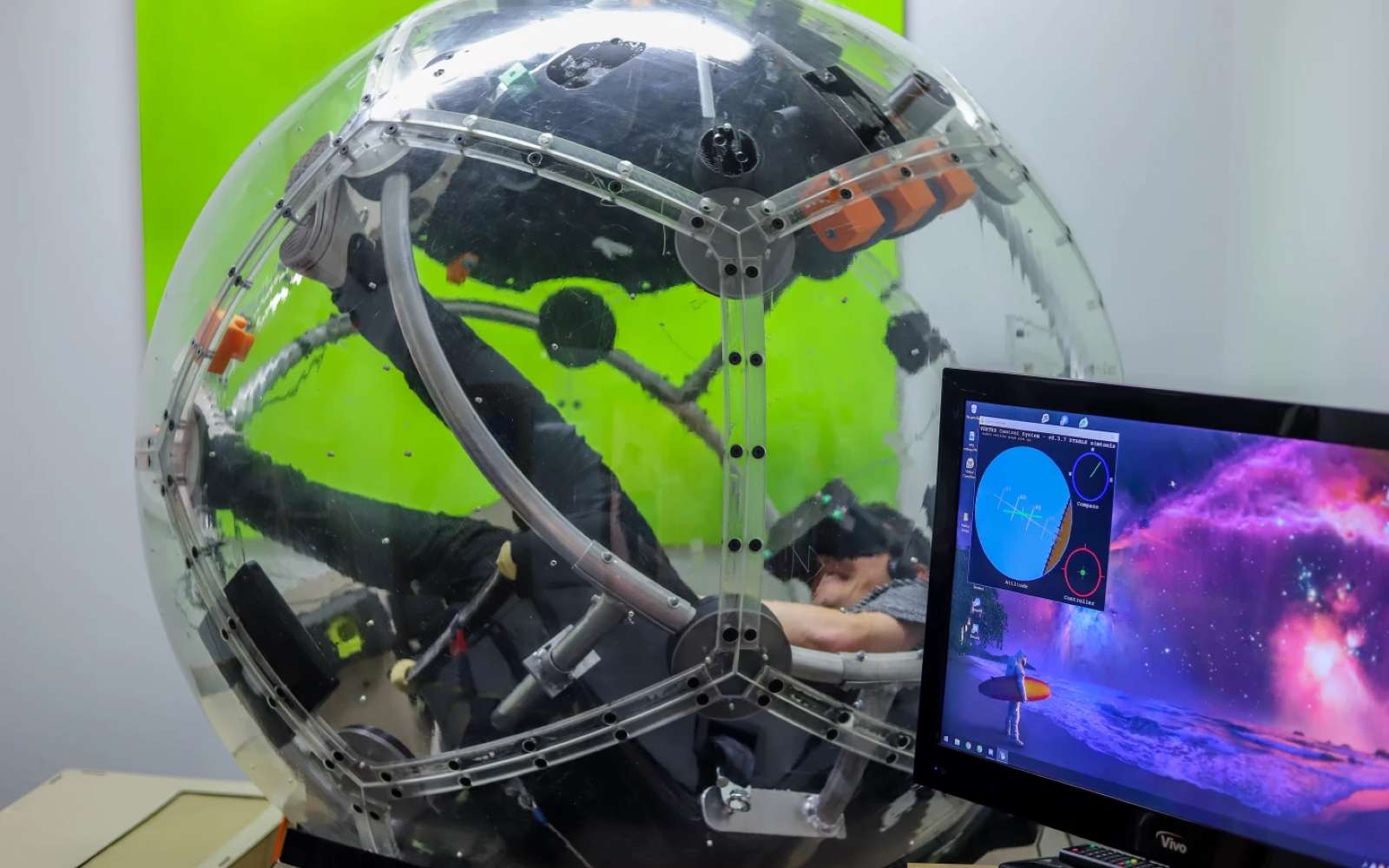The Eight360 Nova is nicknamed “the spinning death ball”. This simulator allows you to believe you are in command of a fighter plane, a spaceship or an all-terrain racing car. Guaranteed sensations!
It is nicknamed ” spinning death ball “, it is the work of the New Zealand start-up Eight360 based in a Makerspace in Wellington (New Zealand). Its creator, touches him on everything Terry Miller, started in the same place by brewing craft beers, to finally lead to this virtual reality simulation platform that can turn on itself in all directions. The ball in question is called the Nova .
It is in its third evolution. It weighs just under 500 kg , for around 2 m². Its capsule consists of frames covered with plexiglass. She encloses a powerful computer, a battery, a seat with a harness and controls adapted to an aircraft , a ship, or a land vehicle. Everything can be modified to stick as much as possible to the driving of the vehicle that we are supposed to simulate. As a screen, a virtual reality headset is used.
The assembly is placed on a support which plugs into the sector. It is with its three omnidirectional wheels that the support can rotate the ball in all directions. It’s “complicated” to achieve, as Terry Miller explains, since the wheels must be able to react instantly and at high speed to reproduce the desired effect in real time. The roll rate is 180 ° per second, which is brutal and makes it possible to reproduce the evolutions of a fighter aircraft . The advantage of rotating the wearer of a virtual reality helmet in all directions is that the movementsthat he feels correspond to what he sees. It must be said that with VR headsets, users often experience disorientation, with sometimes feelings close to seasickness.
Luring human sensations
In terms of sensations , the ball comes to deceive human perception. For example, the acceleration delivered by the takeoff of a fighter plane seems to be real, whereas it is only a rotation of the ball. The body does not perceive it, because what it sees in the helmet does not correspond to the real movement. The same is true if you simulate driving a vehicle on uneven terrain. By adding haptic feedback systems with vibrators, a retraction system for the straps, the effect is guaranteed. According to Terry Miller, users quickly forget that this is not real.
For the autodidact, the software part was difficult. He coded the control system in Python without being a real developer, which required a lot of correction work for his partners. It was also necessary to synchronize the movements of the ball with the VR headset and that it only takes into account the movements of the head rather than those of the ball.
For Terry Miller, finally, the design of this “crazy ball” is akin to a work of maker, with the help of experiments, corrections and sometimes DIY to achieve the right result. It is very impressive to say the least, to the point where the country’s air forces and industrialists have come into contact with Eight360 to operate the simulator.
It must be said that the flight time on a simulator professional is expensive and it is the same for some very expensive site machines. On the fun side, the team thinks they can also offer their platform as an attraction on cruise ships or theme parks. Finally, with the trend of e-sports and in particular their development due to confinement, Miller considers that this type of device could be used by professional players.
